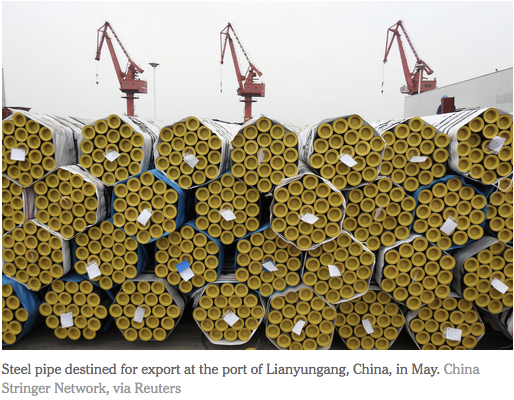It seems President Trump is ready to start rolling back globalization. Let’s hope he doesn’t blow up the postwar economic order.
While Mexican negotiators waited for the United States to make its first move in its proposed renegotiation of the North American Free Trade Agreement, the president last week turned on the invective against another trade deal he called unfair — that negotiated by the Obama administration with South Korea.
Largely in place with the confirmation of Robert Lighthizer as the nation’s top trade diplomat in May, the president’s trade team seems itching to deploy a wall of trade protection around the United States.
This would include new tariffs on imports of steel — and maybe also aluminum — based on the novel argument that the imports somehow endanger national security. The administration is also mulling anti-dumping duties on Canadian aircraft and countervailing duties on imported solar panels.
. . .
The many rounds of trade liberalization after World War II were anchored in two core principles that, in fact, had been adopted by the United States in 1934: reciprocity and nondiscrimination. Countries could expect to receive concessions as valuable as those they offered. Most critically, a concession made to one country would automatically be extended to all, under what was called the most-favored-nation rule.
The cocktail worked. Notably, the principle of nondiscrimination ensured that a given trading partner could not negotiate a tariff cut with the United States and then offer a more favorable deal to another country — undercutting the American competitive position. This broke through a logjam that had stymied previous attempts to liberalize international trade by encouraging countries to make only miserly offers.
The problem is that these principles make for an ill fit with Mr. Trump’s worldview, honed in the zero-sum sphere of real estate deal making where one party’s win is the other’s loss.




